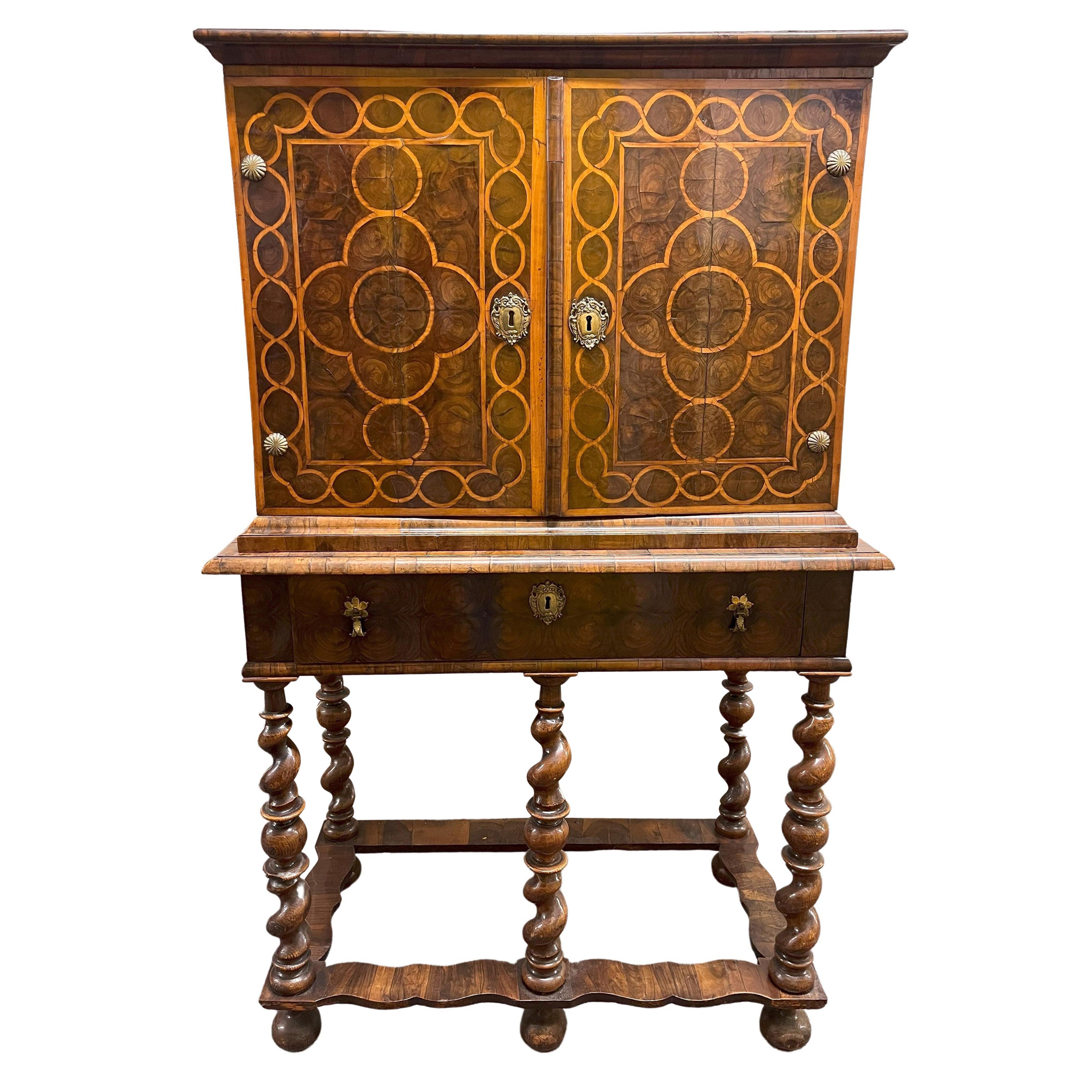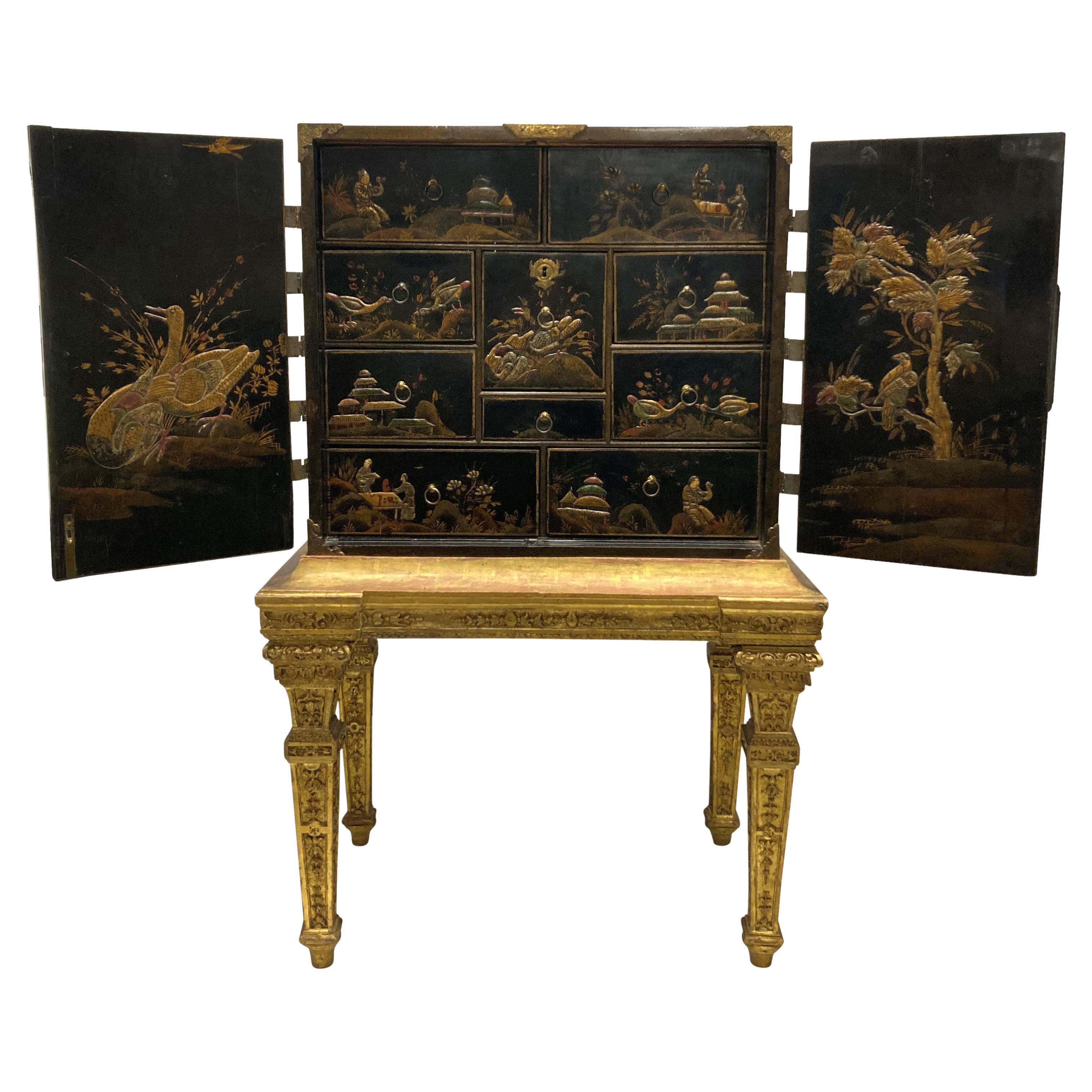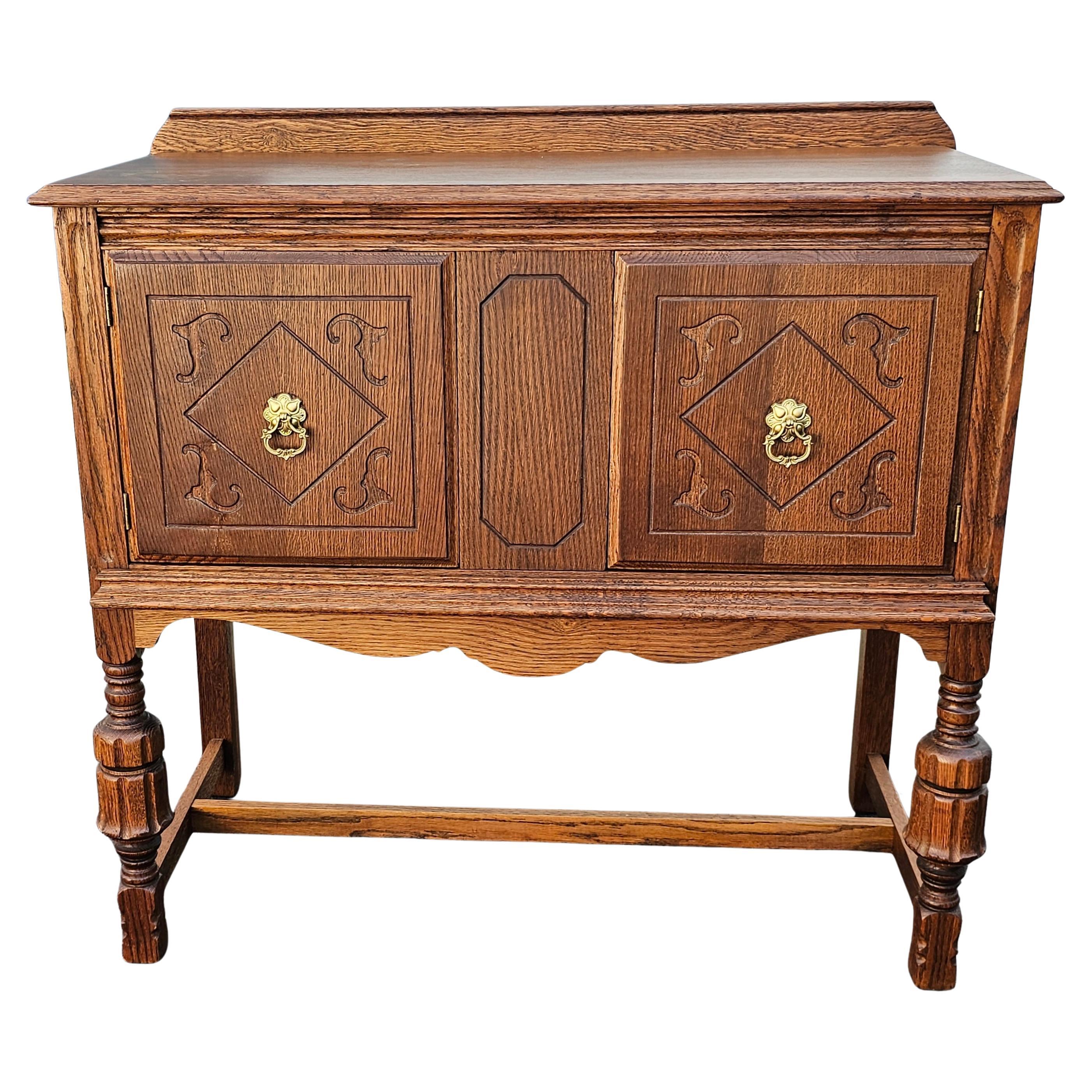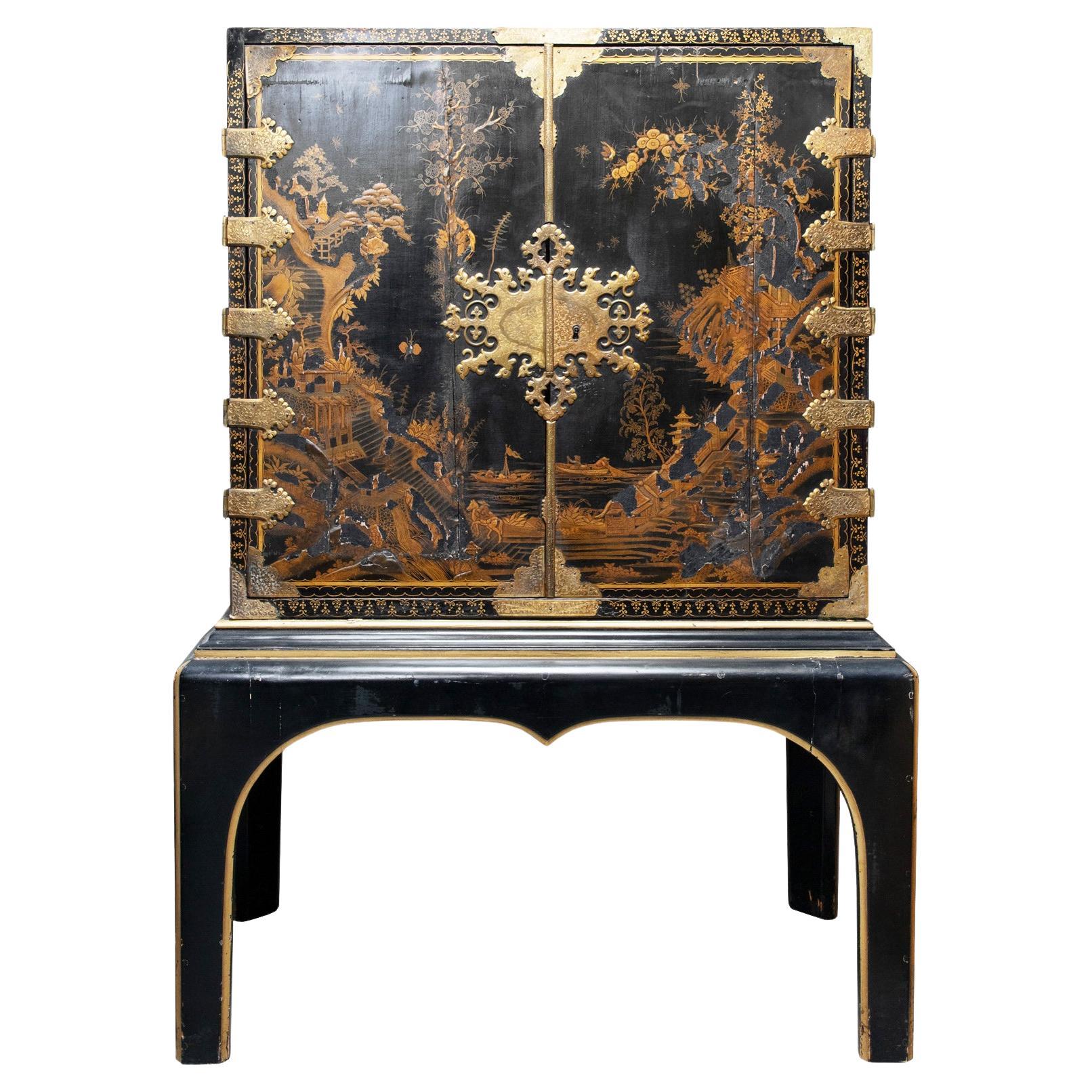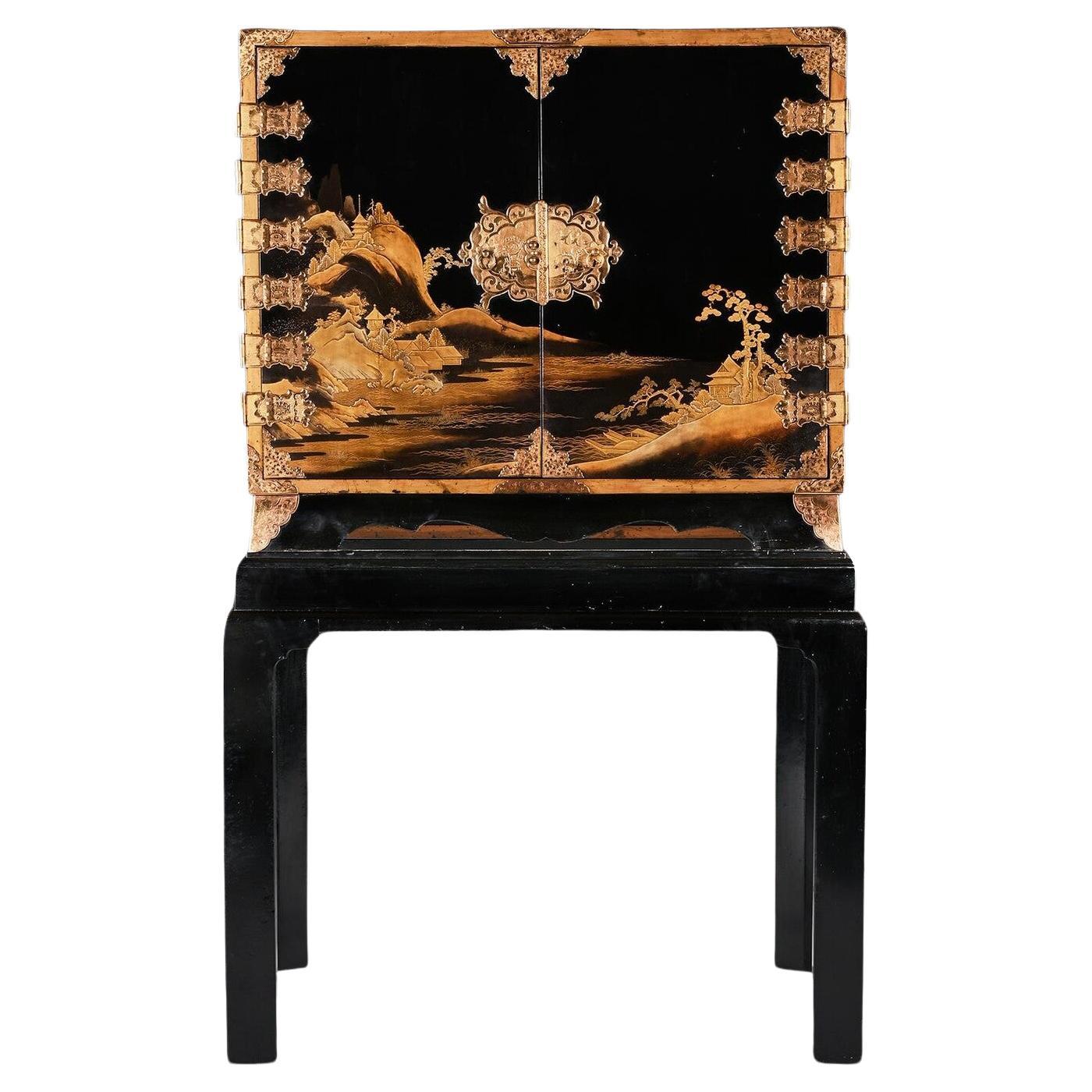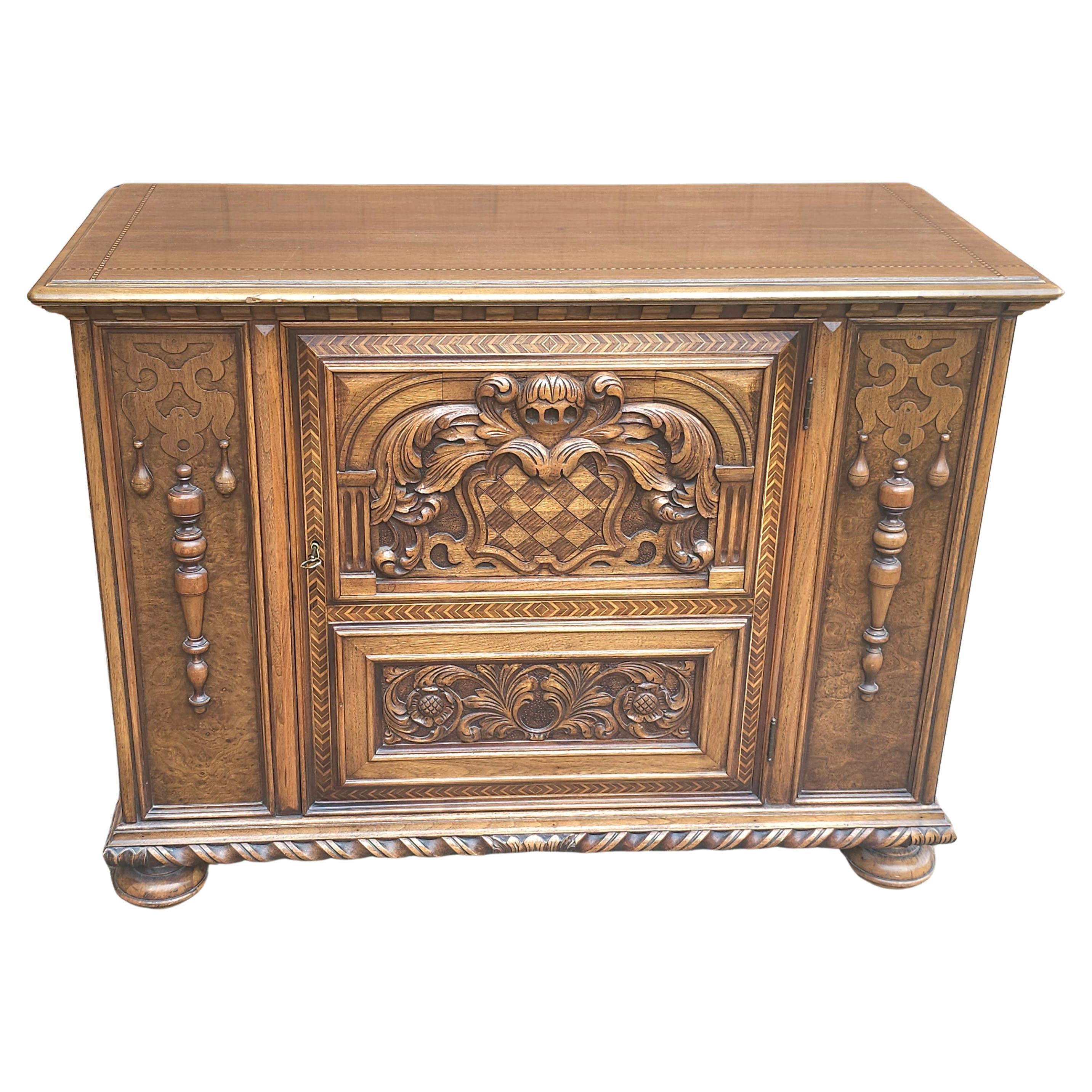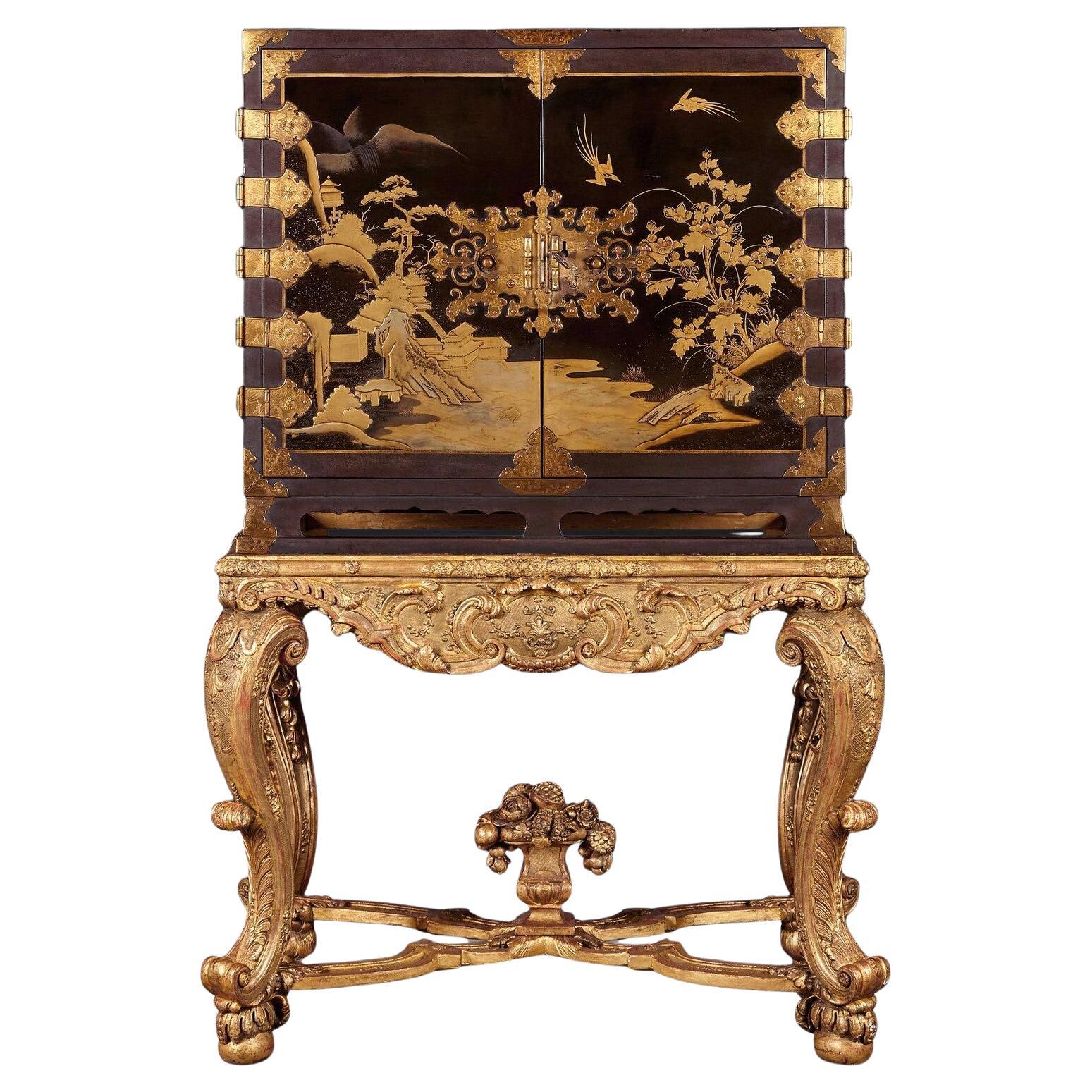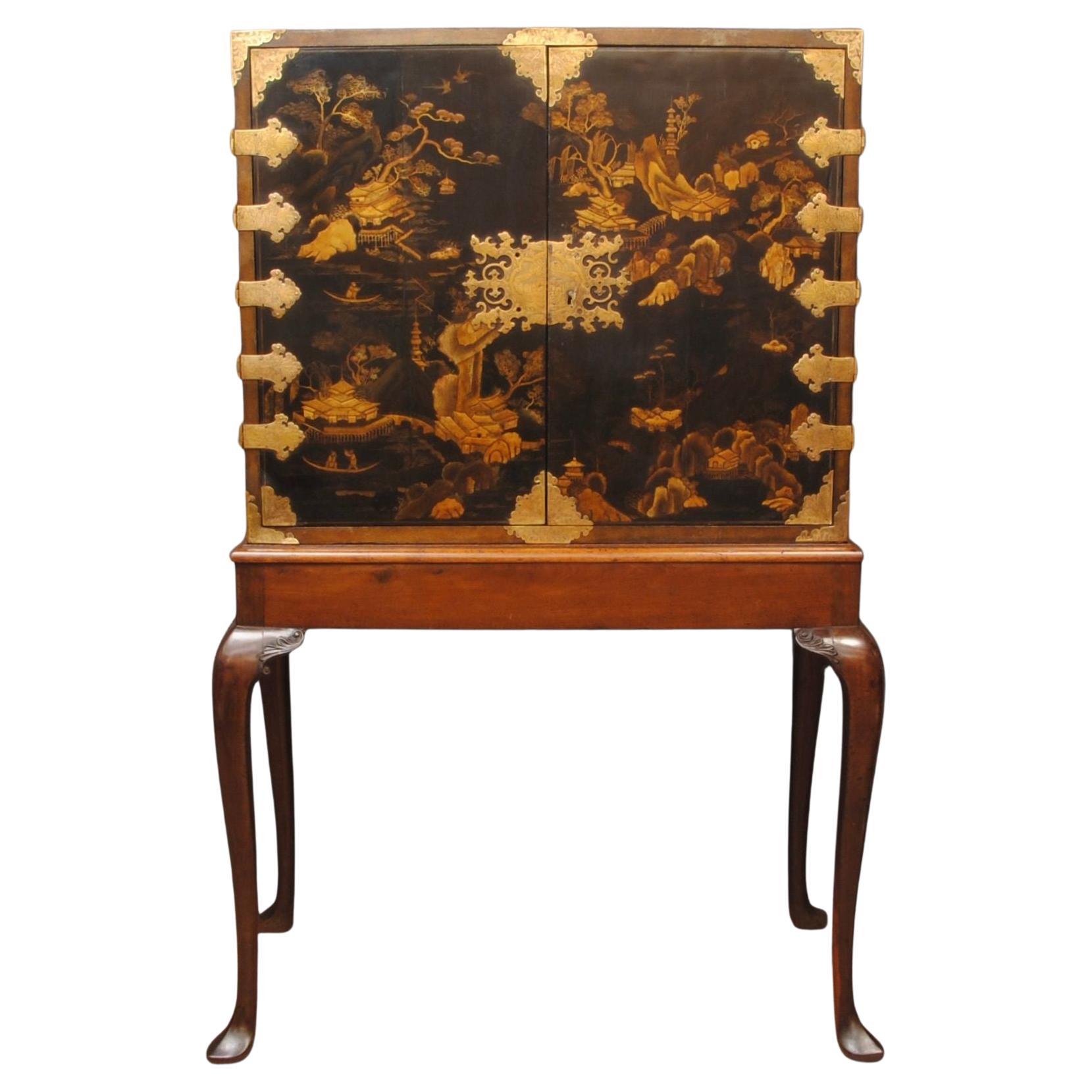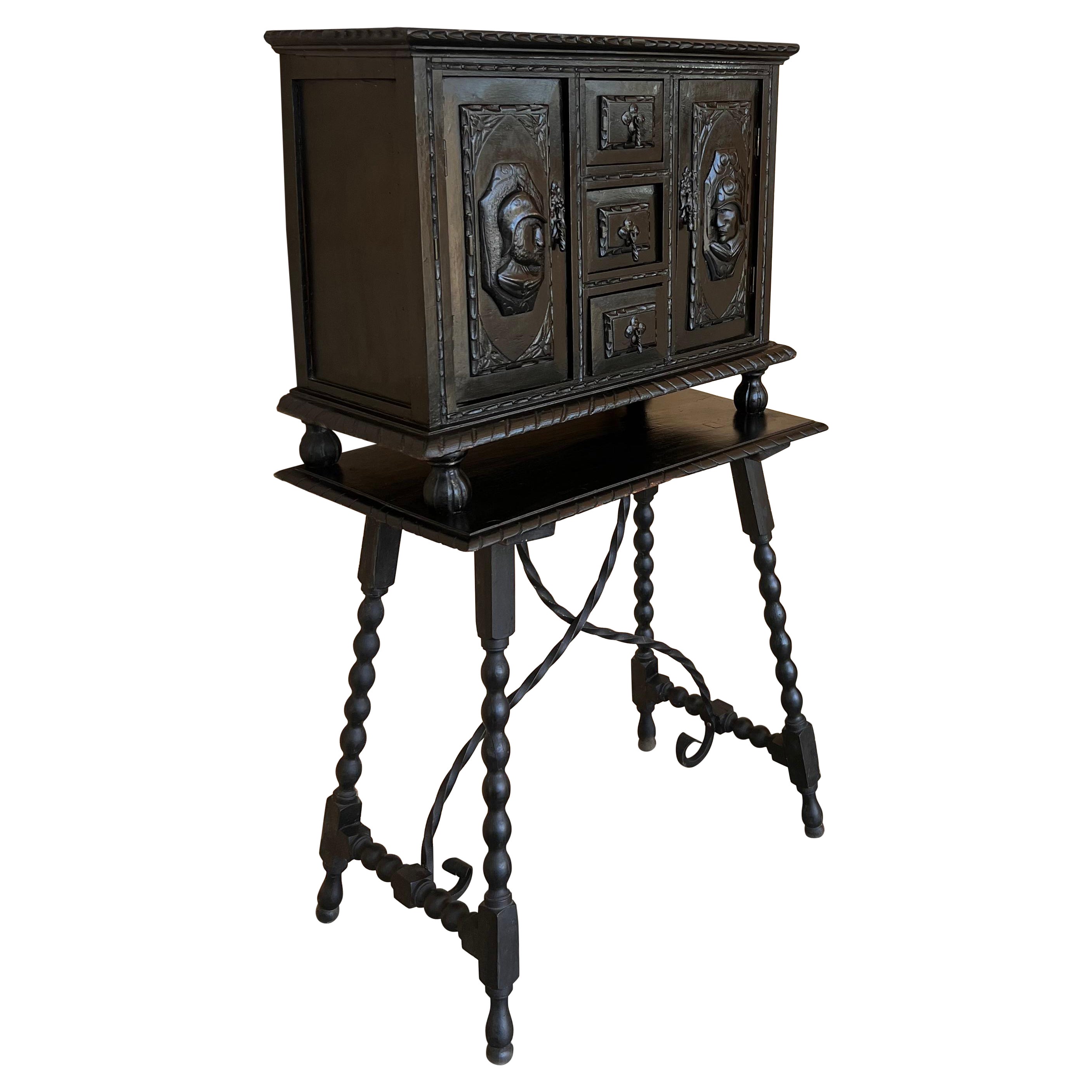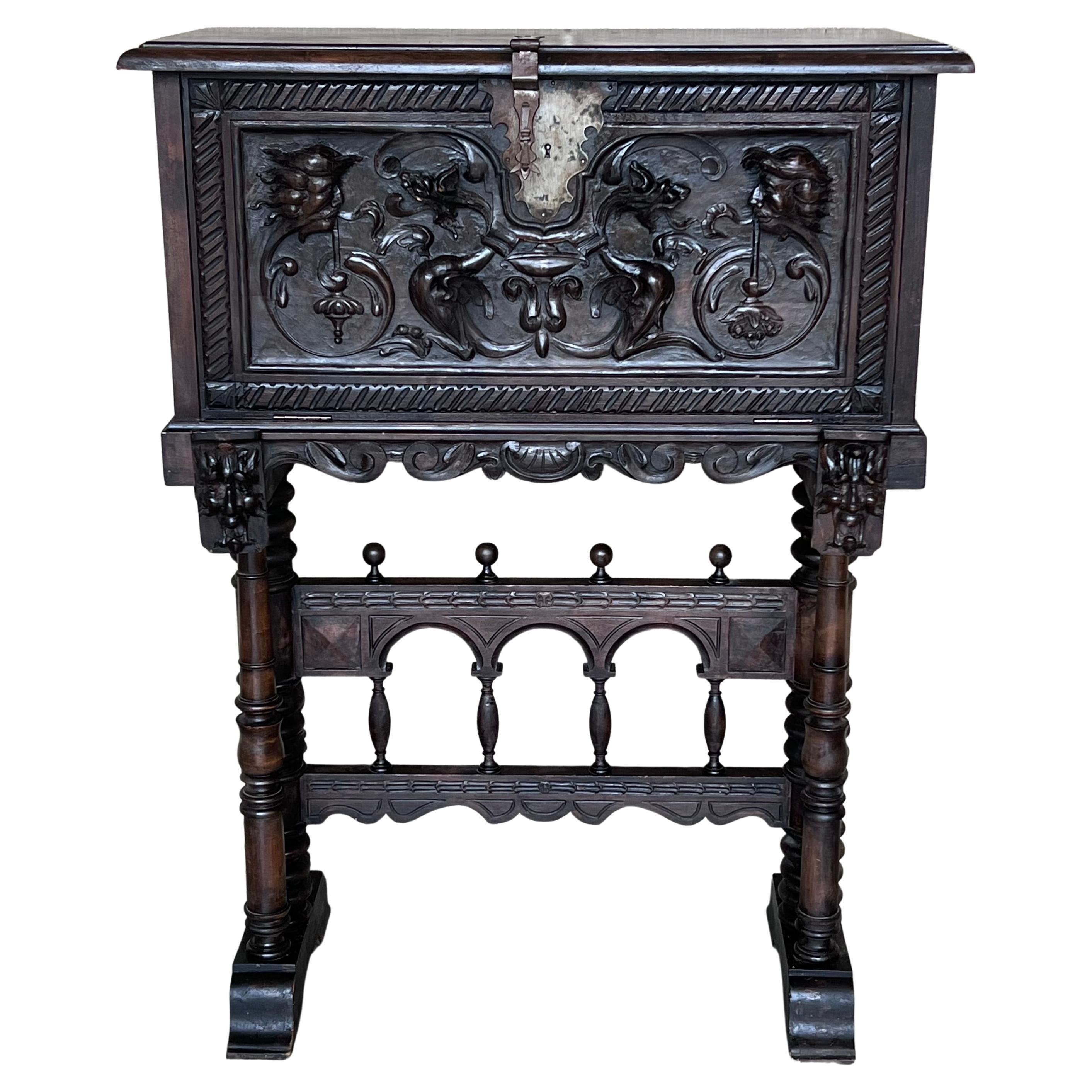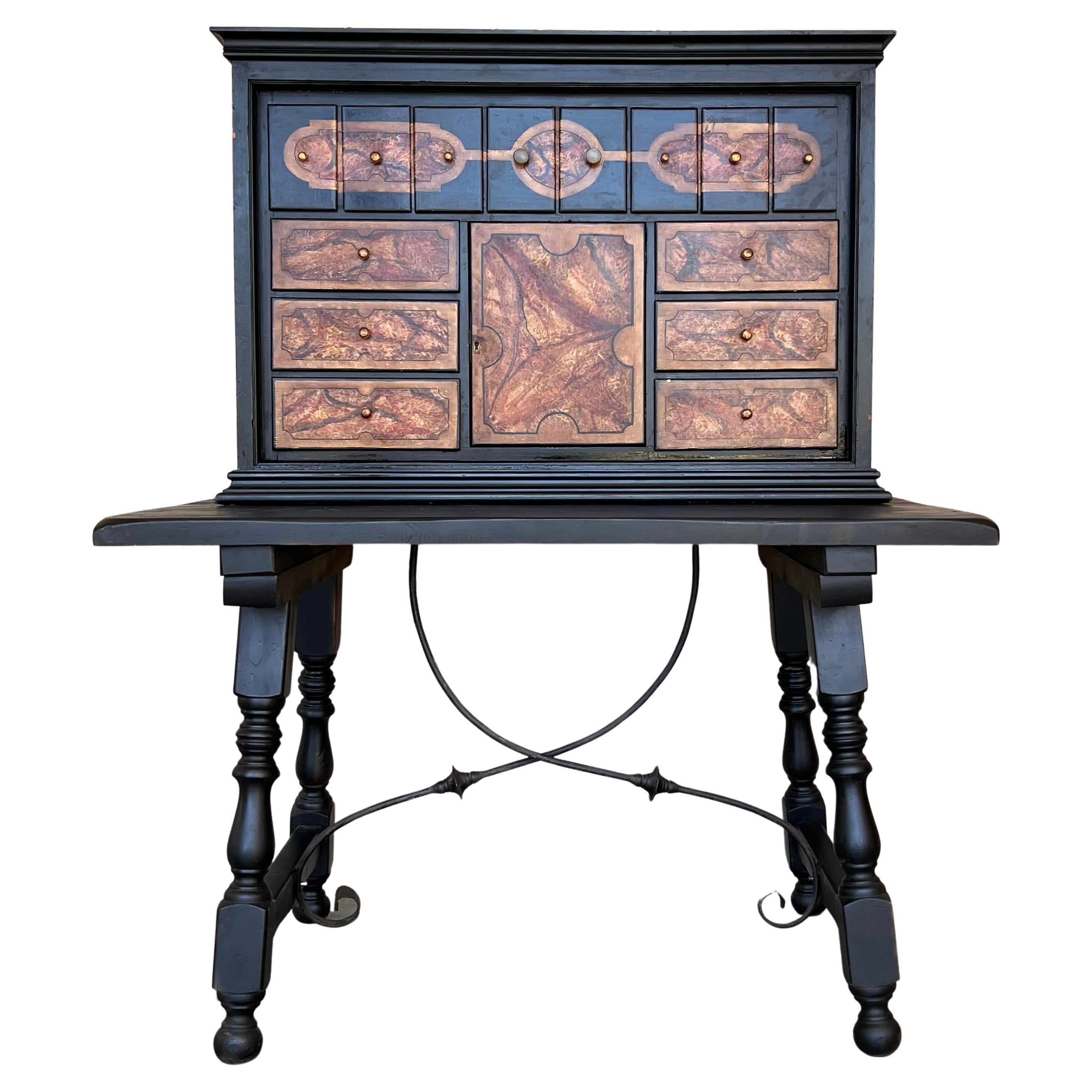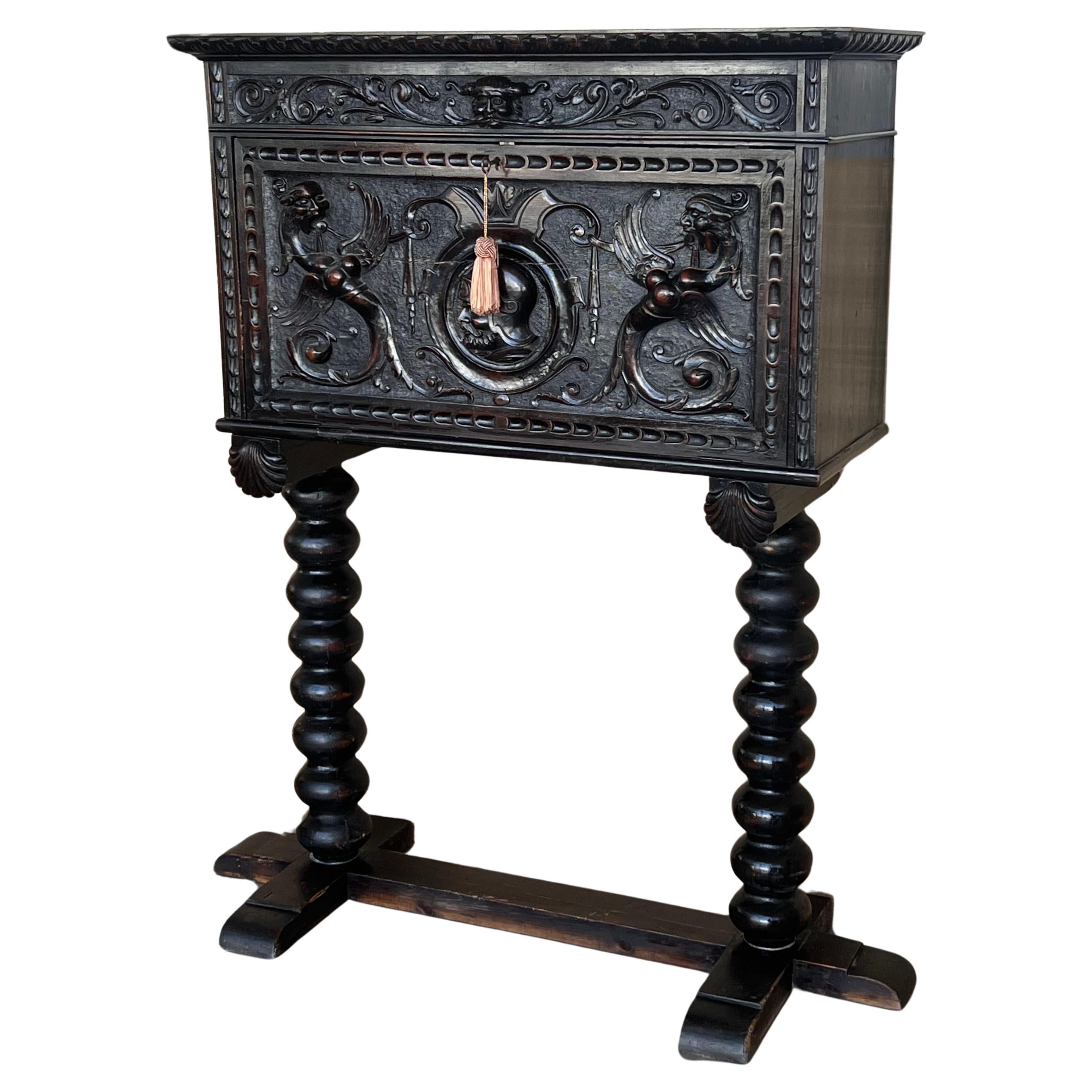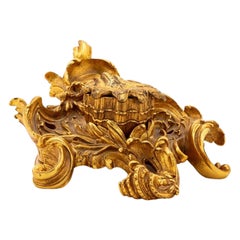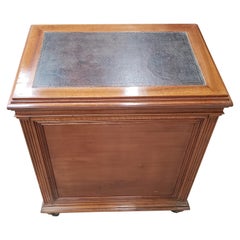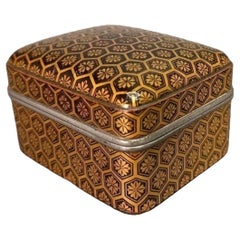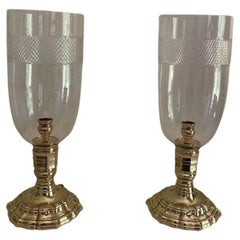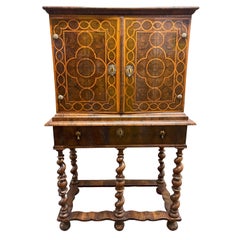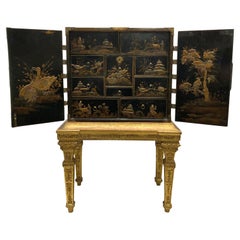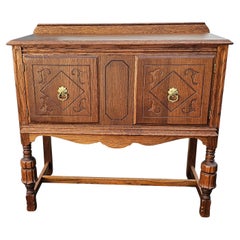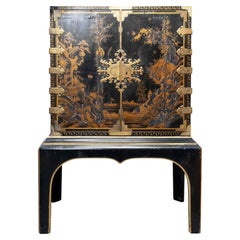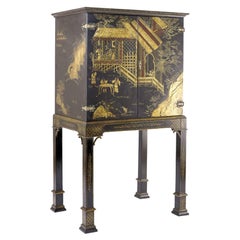
A William & Mary Style Japanned Lacquer Cabinet on Stand, Late 20th Century
View Similar Items
Want more images or videos?
Request additional images or videos from the seller
1 of 5
A William & Mary Style Japanned Lacquer Cabinet on Stand, Late 20th Century
$6,200List Priceper set
About the Item
- Dimensions:Height: 70 in (177.8 cm)Width: 40 in (101.6 cm)Depth: 28 in (71.12 cm)
- Sold As:Set of 2
- Style:William and Mary (In the Style Of)
- Materials and Techniques:
- Place of Origin:
- Period:
- Date of Manufacture:1990
- Condition:Wear consistent with age and use.
- Seller Location:Spencertown, NY
- Reference Number:Seller: F132561stDibs: LU1620242921982
About the Seller
4.9
Vetted Professional Seller
Every seller passes strict standards for authenticity and reliability
Established in 1984
1stDibs seller since 2015
78 sales on 1stDibs
Typical response time: 2 hours
Authenticity Guarantee
In the unlikely event there’s an issue with an item’s authenticity, contact us within 1 year for a full refund. DetailsMoney-Back Guarantee
If your item is not as described, is damaged in transit, or does not arrive, contact us within 7 days for a full refund. Details24-Hour Cancellation
You have a 24-hour grace period in which to reconsider your purchase, with no questions asked.Vetted Professional Sellers
Our world-class sellers must adhere to strict standards for service and quality, maintaining the integrity of our listings.Price-Match Guarantee
If you find that a seller listed the same item for a lower price elsewhere, we’ll match it.Trusted Global Delivery
Our best-in-class carrier network provides specialized shipping options worldwide, including custom delivery.More From This Seller
View AllLouis XV Style Ormolu Inkwell, Late 19/Early 20th Century
Located in Spencertown, NY
Attributed to Leon Messager for Francois Linke, with Rococo and seashell Decoration.
Category
Antique Late 19th Century French Rococo Revival Inkwells
Materials
Ormolu
Louis XVI Style Mahogany Architects Table with Side Cabinet, 20TH Century
Located in Spencertown, NY
The unusual table with adjustable height stand and side cabinet with shelves for storage.
Category
Antique 1790s French Louis XVI Desks
Materials
Mahogany
A Japanese Edo Period Lacquer Kogo (Incense) Box, late 17/early 18th Century
Located in Spencertown, NY
Early Japanese Lacquer Incense Box (Kogo) Late 17thc. Of rectangular form with soft corners, decorated with a diaper pattern in gold lacquer on a brownish black ground, with pewter r...
Category
Antique 17th Century Japanese Edo Decorative Boxes
Materials
Pewter
A Pair Of French Bronze Photophores, Late 19th/Early 20th Century
Located in Spencertown, NY
19TH/20TH CENTURY, lacquered bronze. Each in the Regence style with faceted stem and shaped base
17 in. height
6 in. diameter
Category
Antique Late 19th Century French Baroque Candlesticks
Materials
Bronze
Regency Black and Gilt Papier Mache Lacquer Tray with Later Stand, 19th Century
By Henry Clay
Located in Spencertown, NY
The Chinoiserie decorated black and gilt rectangular tray stamped on the reverse "Clay, King St. Covent Garden.”.
Category
Antique Early 19th Century English Regency Tray Tables
Materials
Lacquer
$2,660 Sale Price
46% Off
Louis XVI Style Brass Inlaid Mahogany Desk, 20th Century
Located in Spencertown, NY
Louis XVI brass inlaid mahogany desk with parcel-gilt and green leather inset top. The mahogany veneered on oak.
With a single drawer. Lock not working.
Category
20th Century French Louis XVI Desks and Writing Tables
Materials
Wood
You May Also Like
William & Mary Walnut Oyster Veneer Cabinet On Stand
Located in Basildon, GB
William & Mary Walnut Cabinet on Stand, the cabinet veneered inside and out with oyster patterns within holly boarders and interlaced lines, the two doors enclosing eleven draws surr...
Category
Antique 1710s British William and Mary Cabinets
Materials
Elm, Walnut
Fine William & Mary Chinoiserie Cabinet on Giltwood Stand
Located in Kent, Dover
A William and Mary Gilt-Japanned Chinoiserie cabinet on gilt wood stand. The cabinet depicting Court and rural scenes, with pierced and engraved strapwork mounts and elaborate escutc...
Category
Antique 1690s English William and Mary Cabinets
Materials
Brass
Early 20th Century William and Mary Style Carved and Stain Oak Server
Located in Germantown, MD
An Early 20th Century William and Mary Style Carved and Stain Oak Server. Clean antique condition.
Size is 38" wide, 18" deep and 34.5" tall and 36.5" Tall to the top of the back spl...
Category
Antique Early 1900s American William and Mary Cabinets
Materials
Oak
Early 18th century Japanese Lacquer Cabinet on Stand
Located in Rīga, LV
Rectangular cabinet has nine drawers inside. Hinges, corner mounts and lock plates in gilt brass. Decorated with river landscapes, insects, birds and animals in pairs. The stand is i...
Category
Antique Early 18th Century English George III Cabinets
Materials
Wood, Lacquer
An Important Late 17th Century Japanese Lacquered Cabinet Edo Period on Stand
Located in Benington, Herts
An extremely fine, elegant and rare late 17th Century Japanese lacquer cabinet, from the Eco period, on later lacquered black stand.
Japanese circa 1690
Provenance
A private Scottish collection
This outstanding cabinet is a fascinating fusion of east and west. The cabinet itself would have been made in Japan, c.1690, and is decorated to the outside with hiramaki-e lacquer. This technique involves the use of sprinkled gold powder which adheres to the lacquer surface. On the best pieces, as with this example, many layers are added in order to create areas of high relief and give depth to the surface decoration. The taste of the Japanese workshops in this period was often for quite restrained pieces with plenty of the black background visible, unlike some of the busier Chinese lacquer or European japanned examples produced around the same time. The Japanese makers seemed content to rely on the outstanding quality of the lacquer itself, regarded by most experts as the finest lacquer ever produced, and did not see the need to cover every surface believing that less was more in this respect. The lacquer here is used to produce a mountainous scene with buildings on the bank of a river, the other side of the river with more buildings and a contrasting flatter and forested landscape. The fine perspective achieved is the result of the clever use of raised and flatter areas in the lacquer itself in combination with the drawing of the design itself.
Another remarkable aspect of this piece is the fine metalware throughout, but particularly the lockplate / hasp, hinges and foot mounts to the front. This is all beautifully cast and engraved contrasting against the black background. Interestingly another cabinet on stand with near identical metalwork was advertised in the Burlington Magazine, November 1913, with the dealer W. Williamson and Sons of Guildford. The lacquer on that piece is similarly refined and it seems likely that both pieces came from the same workshop.
The European influence in our piece can be seen in both the later ebonised stand and in the japanned decoration which has been applied to the inside of the doors and is also very fine indeed. This consists of two panels with birds of prey perched on branches in colours set against a golden background. The cabinet has a recent Scottish provenance and so it is likely that the ebonised stand was made in Britain though such pieces were made throughout Europe as a way of quite literally elevating these imported pieces of eastern lacquer as in Japan these would have been used on the floor. Inside the cabinet there is a combination of more Japanese lacquer and lock plates and European drawer handles. Most of the lacquer drawer fronts incorporate mountainous scenes and birds in combination, with a few purely one or the other of the two subjects. Again the lacquer is in excellent condition and is of exceptional quality with multiple layers of relief used in one single scene in many cases.
As mentioned above, Japanese lacquer is the most technically brilliant of the eastern lacquers and, as such, was highly prized by collectors and connoisseurs throughout Europe when this piece was made. The acquisition of such pieces would only have been possible for a small group of incredibly wealthy individuals, largely royal or high ranking courtiers or merchants connected with the East India trade...
Category
Antique 1690s Japanese Edo Cabinets
Materials
Lacquer
Early 20th C William and Mary Brazilian Rosewood and Burl Walnut Inlaid Cabinet
Located in Germantown, MD
Early 20th Century William and Mary style Brazilian Rosewood and Burl Walnut with satinwood Inlays and carved Cabinet with finished solid maple loose shelves. Functional lock and key...
Category
Early 20th Century American William and Mary Cabinets
Materials
Maple, Rosewood, Walnut
Recently Viewed
View AllMore Ways To Browse
Japanese Lacquer Cabinet On Stand
William And Mary Japanned
Art Deco Ash
Industrial Wooden Cabinet
Urn Inlay
18th Century Lacquer Cabinets
Art Deco Style Cabinet And Shelves
Cabriole Leg Display Cabinet
Georgian Antique Doors
Mid Century Modern Metal Kitchen Cabinets
Used Screen Doors
Chicago Cabinet
Dark Green Cabinet
Dutch Marquetry Furniture
Mother Of Pearl Panel
Sliding Glass Doors And Glass Shelves
Corner Display Cabinets Glass
Curio Display Cabinet
